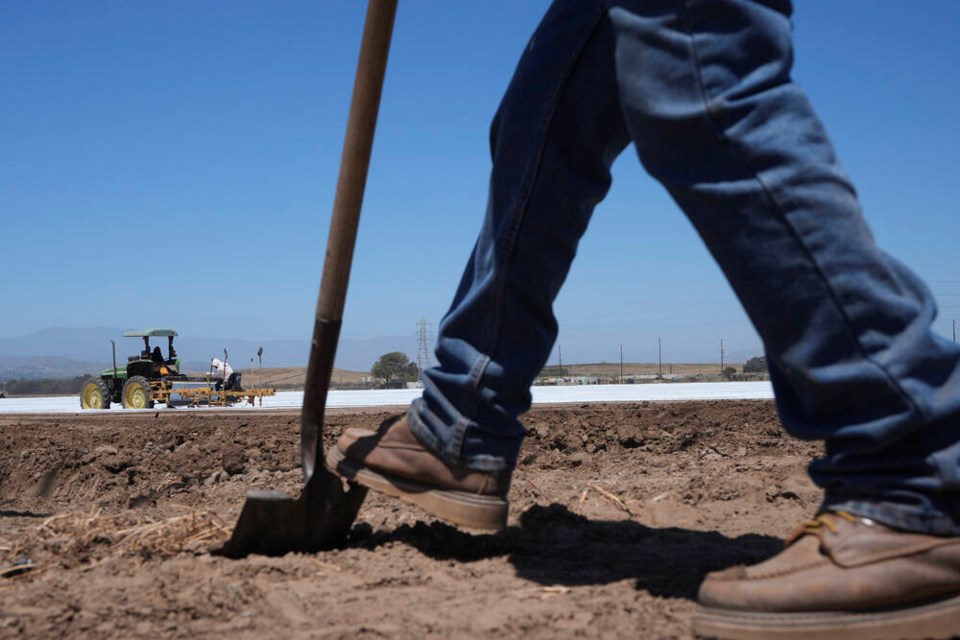In B.C., workers have the right to refuse work when their workplaces are too hot.

A commentary by two university professors and an advocate for migrant workers.
As the weather gets hotter, debates around the issues facing British Columbians are also heating up: Canadian food security amidst crushing American tariffs, the protracted housing crisis and the future of migration.
Left out of these debates are the more than 10,000 migrant farm workers who travel to B.C. year after year to provide vital labour to the agricultural sector.
For these workers, hotter summers, restrictive migration policies and housing are not separate issues.
Migrant workers in B.C.’s agricultural industry endure conditions in the fields and in their housing that are overheated and under-regulated, falling through the cracks of the limited existing guidelines.
Now is the time to take action.
In B.C., workers have the right to refuse work when their workplaces are too hot.
Highlighting the insufficient nature of existing guidelines, the B.C. Workers Solidarity Network is running a “Too Hot to Work” campaign to demand mandated temperature limits in workplaces and 24-hour cooling centres.
But for migrant farm workers, the extreme summer heat plagues them from their place of work into their employer-provided rental housing, often located far from services available in the city/community and public greenspaces such as parks and beaches.
Over a third of the workers who produce our food are migrant workers who come to Canada mostly from Mexico, Guatemala and Jamaica.
In B.C., they generally live in employer-provided rental housing and this cost is deducted from the workers’ pay.
In summer 2023, we did a small study in the Okanagan to measure the temperatures inside this employer-provided rental housing.
We saw temperatures as high as 42.8 C in common areas, often exceeding 30 C over multiple days.
Overall, indoor temperatures were consistently higher than outdoor temperatures.
This means workers endure high temperatures around the clock without relief.
They are loath to complain to their employers for fear of being sent home, being reprimanded for seeming to be a “trouble” worker or concerns that their contracts will not be renewed the following year.
This means that migrant agricultural workers are unlikely to exercise their rights either as workers or as tenants.
As British Columbians, we should also be aware and alarmed that climate change appears to be reshaping what qualifies as safe heat exposure for migrant agricultural workers.
The temperatures that workers recorded in their housing exceed virtually all provincial and international guidelines. Even more arresting, guidelines in B.C. have become more lax as temperatures have risen.
In 2016, the B.C. Agricultural Council housing inspection form needed to support employers’ application to hire migrant workers, included the question: “Can a temperature ranging from 19 Celsius degrees minimum and 25.5 degrees maximum be maintained in the accommodations at all times either by heating or cooling as necessary?”
By 2020, the pre-season inspection form read as: “Can the [interior] temperature be maintained at most times between 18 C and 27 C while occupied by TFWs?”
In other words, the maximum allowable indoor temperature has been increased and new language offers considerable wiggle room for enforcement.
Regardless of the answer to these questions, there is little impact on the employer’s ability to be approved to hire and house migrant workers.
For too long, standards for migrant farm worker housing in B.C. and nationally have fallen through the jurisdictional cracks.
Currently, the federal government is proposing 12 new requirements for workers’ housing that will be implemented by provinces starting in 2027.
A national framework could mark an important and meaningful step forward, but to date, it is unclear if these standards are sufficient, how provinces will implement them and if the inspection process will be reformed to enforce healthy and safe housing for all workers.
We need to adopt and enforce specific evidence-based and worker-centred national guidelines to protect this group of vital workers now, and to demonstrate that real change brought about through grassroots demands — coupled with provincial and federal leadership — is possible for all British Columbians living in homes that remain unprepared for a warmer climate.